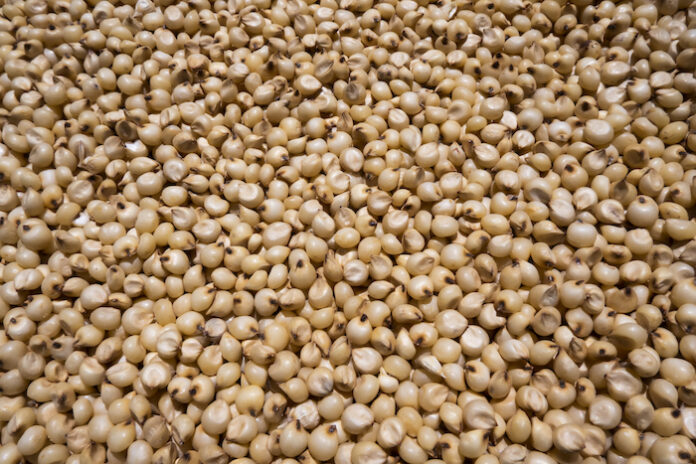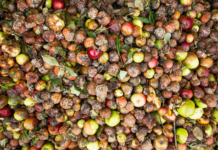
Popping is a food technology that harnesses the explosive expansion of grains when subjected to rapid heating. This process transforms the internal structure of the grain, creating a light, airy, and readily digestible product, a characteristic that makes it popular in snack food industries worldwide but is increasingly finding new applications in healthy foods and as an ingredient in processed foods such as soups, pasta and baked goods.
Unlike other starch modification methods, such as chemical treatments, popping is a quick (seconds-long) and non-toxic process that preserves the grain’s nutritional and bioactive qualities (including protein, fiber, resistant starch, and antioxidants), while enhancing its tech-functional properties.
The popping mechanism relies on the presence of moisture within the grain kernel and its strong outer hull, known as the pericarp. When heated, the water or moisture inside the kernel converts into steam, building immense pressure within the confined space. This process involves applying high temperatures (180 to 310 °C) for short periods (90 to 240 seconds), causing water vapor to increase inside the grain. This builds pressure that bursts the outer layer (pericarp) and rapidly expands the grain. Once the pressure surpasses the hull’s capacity, it ruptures explosively.
The sudden release of pressure causes the superheated steam to rapidly expand the gelatinized starch and proteins within the endosperm, transforming them into a foam. This structural change affects texture and alters the grain’s ‘physicochemical’ and ‘rheological’properties. As the foam quickly cools, the starch and protein polymers solidify, forming the characteristic crispy and fluffy structure of popped grains.
Several factors influence the success and quality of popped grains
Varieties of grains exhibit varying popping abilities due to differences in kernel size, shape, and composition. Increasingly, grains are specifically cultivated for their superior popping characteristics. Optimal moisture content is key – for example, between 13-15% moisture in popcorn is typically crucial for achieving maximum expansion volume and flake size. Too little moisture prevents sufficient steam generation, while excessive moisture can lead to premature popping or a soggy product. Kernel features like pericarp thickness and endosperm composition play a role in how well a grain pops.
Heating methods include conventional methods like hot air or hot oil popping, as well as microwave ovens, with each impacting popping efficiency and characteristics. Fluidized bed systems, which allow for continuous processing, are gaining traction in industrial applications, offering better heat and mass transfer.
While popcorn remains the most well-known example, popping technology extends beyond snacking and is applied to other cereals such as sorghum, rice, and even legumes like chickpeas, creating puffed snacks, breakfast foods, and ingredients. Popped grains can serve as a base for developing easy-to-digest weaning food formulations and supplementary food products.
Research continues to explore the potential of popping for creating healthy and sustainable food solutions, addressing demands for diverse and appealing snack options. Popped sorghum and corn flours have demonstrated viscosity under different temperatures, making them ideal additives for products requiring thermal processing, such as soups and creams. These can also improve the texture and stability of items like yogurt, pasta, and baked goods.
The popping process itself is continually evolving, with advancements like fluidized bed technology aiming to improve efficiency, hygiene, and product quality in large-scale production. Researchers are also delving into the chemical and structural changes occurring during popping to optimize the process and enhance the nutritional value of popped grains. By understanding the scientific principles behind popping and exploring new applications, this ancient food technology continues to offer exciting possibilities for the future of food.
IndiFoodBev — authentic, impactful and influential
An English-language food and beverage processing and packaging industry B2B platform in print and web, IndiFoodBev is in its third year of publication. It is said that the Indian food and beverage industries represent approximately US$ 900 billion in revenues which implies more than 20% of the country’s GDP. Eliminating the wastage on the farmside can help to deliver more protein to a higher number of the population apart from generating sizable exports. The savings in soil, seeds, water, fertilizer, energy and ultimately food and nutrition could be the most immense contribution that country is poised to make to the moderation of climate change.
To improve your marketing and grow sales to the food and beverage processing and packaging industry, talk to us. Our research and consulting company IppStar [www.ippstar.org] can assess your potential and addressable markets in light of the competition. We can discuss marketing, communication, and sales strategies for market entry and growth.
Suppliers and service providers with a strategy and budget for targeted marketing can discuss using our hybrid print, web, video, and social media channels to create brand recognition linked to market relevance. Our technical writers are ready to meet you and your customers for content.
The second largest producer of fruit and vegetables in the world is continuously expanding processing capacities and delivery systems with appropriate innovative technologies. We cover product and consumer trends, nutrition, processing, research, equipment and packaging from farm to thali. Get our 2025 media kit and recalibrate your role in this dynamic market. Enhance your visibility and relevance to existing markets and turn potential customers into conversations. Ask for a sample copy of our bi-monthly in print or our weekly IndiFoodBev eZine each Wednesday.
For editorial info@ippgroup.in — for advertisement ads1@ippgroup.in and for subscriptions subscription@ippgroup.in
Naresh Khanna – 10 February 2025
Subscribe Now










